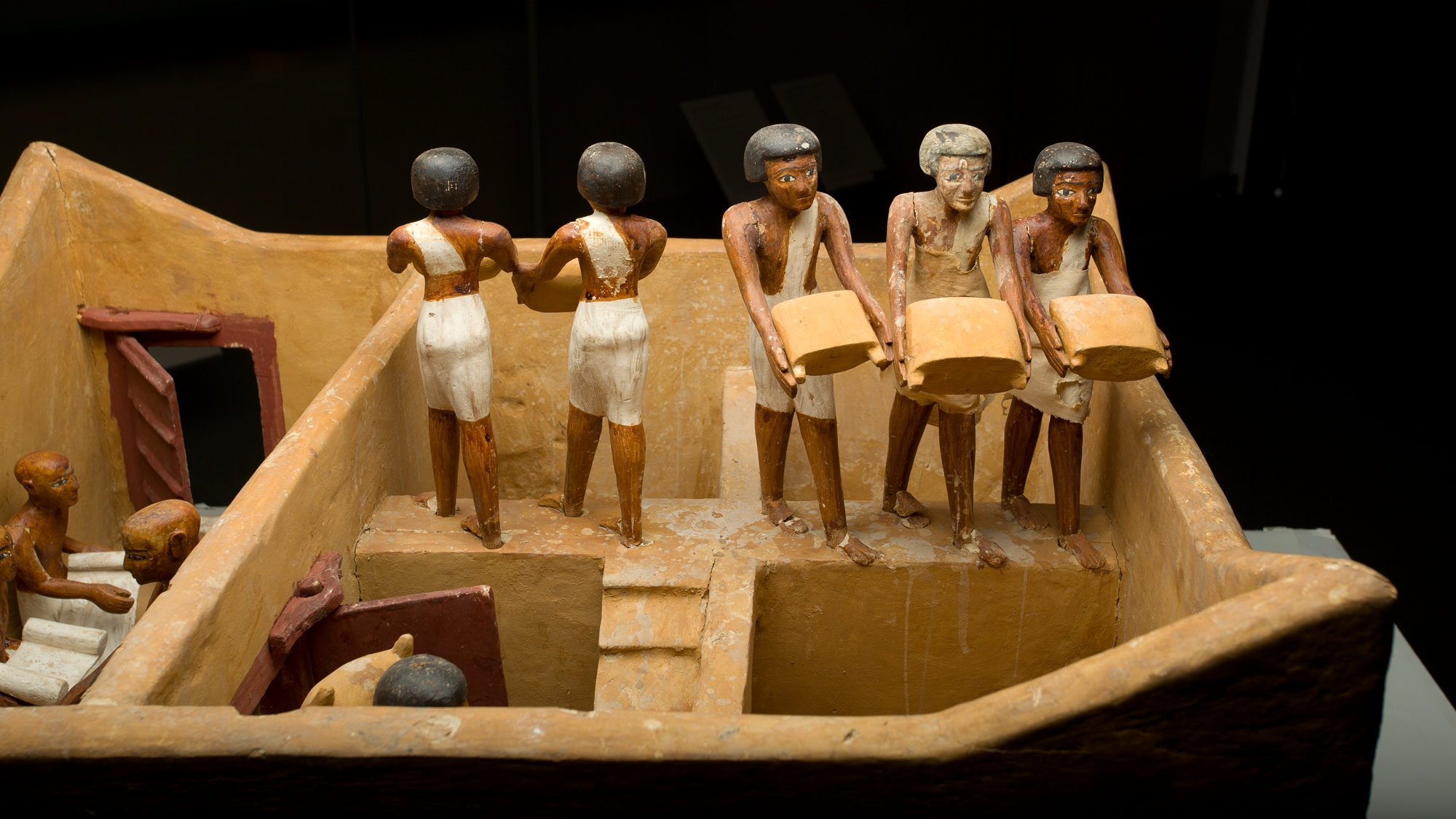
Name: Model of a Granary with Scribes
What it is: A wooden model with plaster, paint and linen decorations
Where it is from: Thebes, Egypt (modern-day Luxor)
When it was made: Circa 1980 B.C.
Related: Thule snow goggles: 1,000-year-old Arctic eyewear carved from walrus tusks
What it tells us about the past:
This decorated wooden diorama was discovered in a secret chamber of an ancient Egyptian tomb in Thebes (now Luxor) in 1920. The enormous tomb was that of Meketre, the chief steward of the pharaoh's household, who died around 1980 B.C., in Egypt's 12th dynasty during the Middle Kingdom, a period known for its distinctive art. The model represents a miniature granary, which suggests the importance of wheat and barley in ancient Egyptian society.
The model, which is on view at the Metropolitan Museum of Art in New York City, was made from a wooden box measuring 29.5 by 22 by 14.4 inches (74.9 by 56 by 36.5 centimeters). The slightly peaked corners evoke an ancient style of architecture that helped protect against thieves and rodents, according to the Met. Inside, the box is divided into two sections: the place where the grain was stored and the place where measuring and accounting took place.
Models of 15 men, each roughly 7.9 inches (20 cm) tall, were also included in the diorama. Six are carrying sacks of grain, while the other nine are recording the supply on papyrus scrolls and wooden tablets.
Egypt's agricultural wealth came primarily from cereals, including wheat and barley, and the pharaohs controlled the main food-producing area: the Nile Valley. Keeping track of grain supplies was therefore crucial to ancient Egyptian society, according to the Met. In Meketre's role as chief steward, he was likely in charge of all royal estates that supplied the palace with grain and other food.
The secret chamber of Meketre's tomb revealed 24 models in total, including a garden of fig trees and a sporting boat. Half of these models are in the Met's collection, while the other half are in the Egyptian Museum in Cairo.
It is unclear why some ancient Egyptians were buried with these models, but some scholars suspect the dioramas may have been created to help support the dead in the afterlife.







